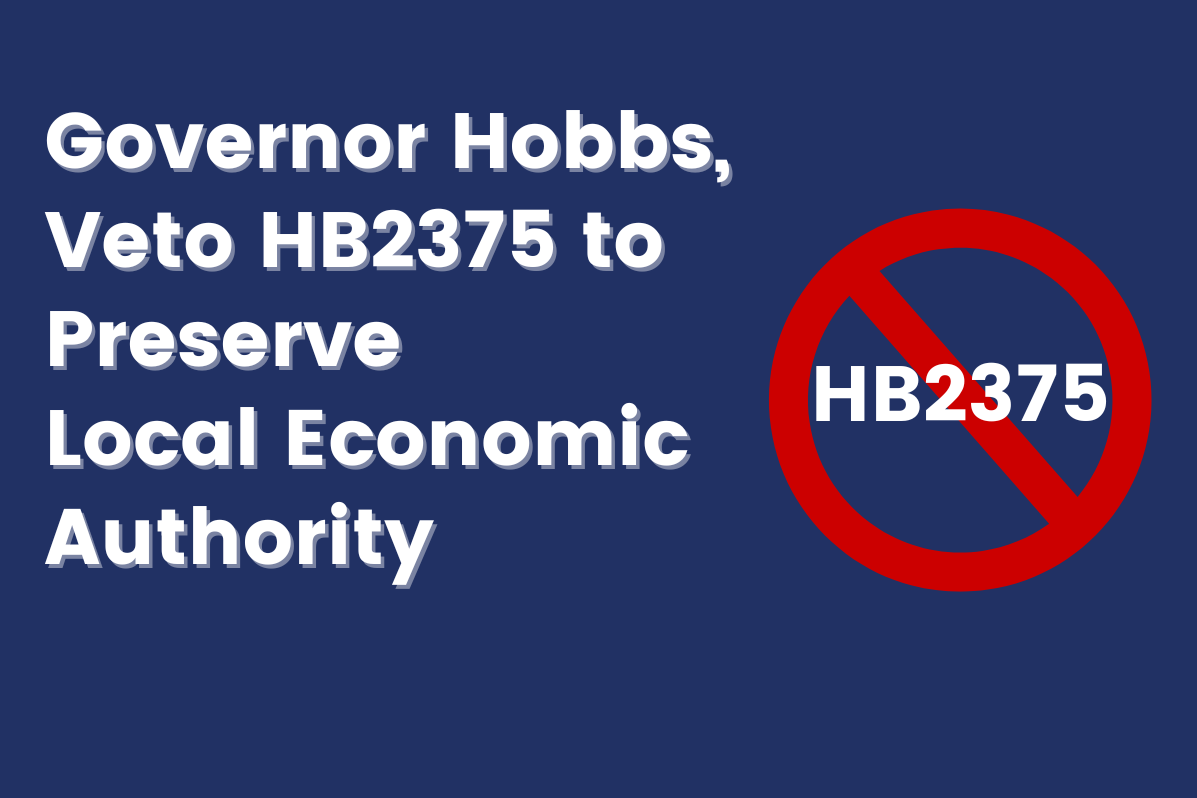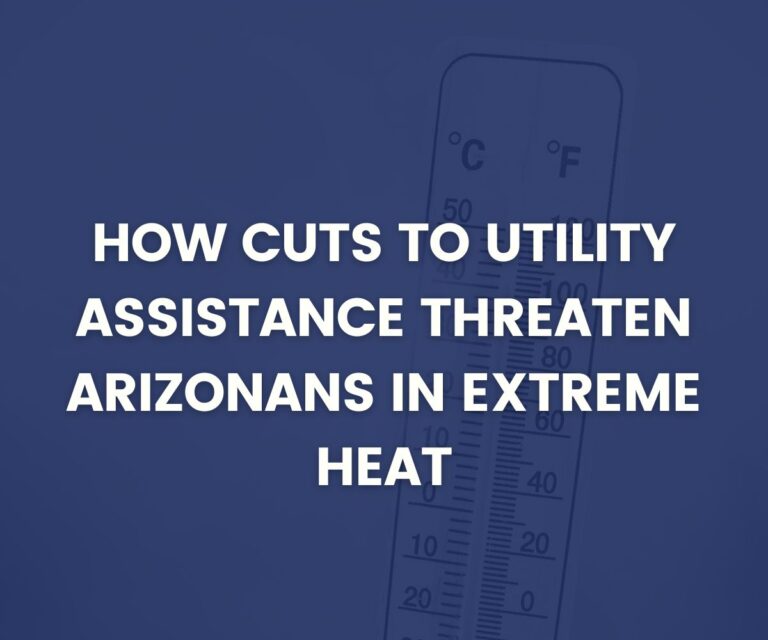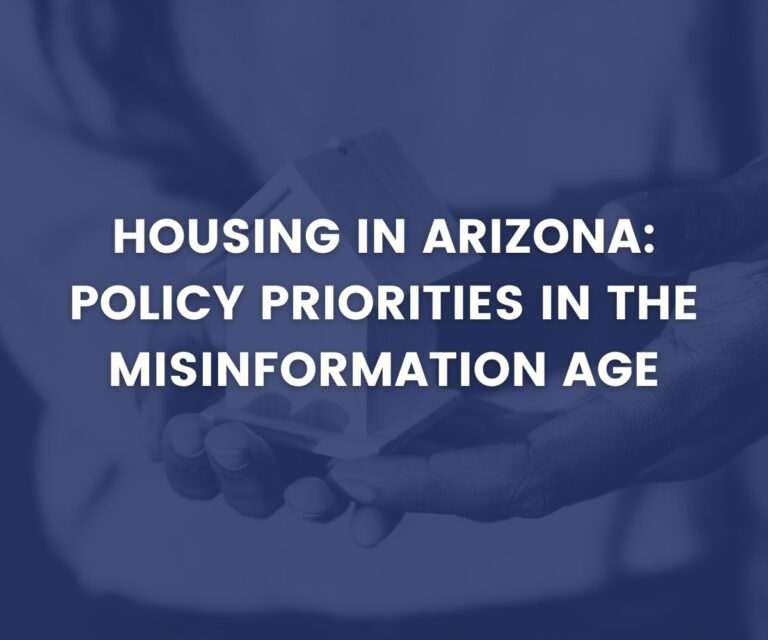
HB2375 WOULD BAN A SUCCESSFUL ANTI-POVERTY TOOL
Arizonans work hard, whether helping an aging parent, caring for a new baby, or punching a timecard for one or more jobs. But not all work comes with a paycheck. And even with paid positions, wages have not kept up with inflation, child care costs, and skyrocketing rent, leaving many people in our state struggling to make ends meet.
For some, these costs lead to unsafe and unstable consequences. Consider that older adults are the fastest-growing age group of those experiencing homelessness, composing nearly half of the homeless population and their numbers are estimated to triple by 2030. Meanwhile, studies have found that nearly one-third of youth experiencing homelessness have had experiences with foster care, and 22 percent of youth in foster care experienced homelessness within the first year after they left the foster care system.
Policy solutions like time-limited guaranteed income programs have been implemented in some communities specifically to support these seniors and youth, as well as others experiencing systemic barriers to economic security.
Guaranteed income (also referred to here as income assistance) programs provide monthly payments ranging from $500 to $1,000 to people experiencing systemic barriers to economic security, including single mothers, pregnant women, foster youth transitioning out of the system, seniors, and others who are struggling. The programs offer a foundation for people to build on and the flexibility to use resources where they are needed most—whether it’s food, clothes, utilities, or rent.
Stability and Security for Families
People who participated in time-limited guaranteed income pilots and received a monthly income stipend have shown improvements across many measures of economic well-being.
Specific results include:
- Data from pilots across the country representing over 7,500 participants show that 86 percent of the money goes toward paying for food and groceries, transportation, housing, clothing, and utilities.
- Eight in ten mothers who participated in a pilot program in Mississippi reported that they could pay their bills on time, up from three in 10 before the program started.
- Participants found full-time employment. The most recent research out of the Stockton Economic Empowerment Demonstration (SEED) shows participants found full-time work at double the rate of non-participants.
- More parents finished high school, setting them up for higher earning potential over the course of their lives. Guaranteed income programs can also help people finish college or start a business.
Reducing poverty among parents is known to be a game changer for parents and children. Research compiled by Chapin Hall at the University of Chicago found that providing economic and concrete supports to families helps make homes safer and more stable for kids which, among other positive outcomes, helps families avoid or reduce involvement in the child welfare system. Poverty is a risk factor for neglect which accounts for about 92 percent of child welfare reports in Arizona.
Research on income assistance also shows that it can lead to better health outcomes – specifically birth weight, nutritional access, and mental and physical outcomes – and people who participate in cash programs often report improved parent-child relationships.
Stronger Communities
Income assistance programs are not just good for people enrolled in them – they keep money flowing through local economies. People who receive monthly payments turn around and use that money at local grocery stores, gas stations, and other businesses in their communities. When demand increases, those businesses can create more jobs.
- A Columbia University study found that for every $1,000 provided to families with children, society reaps $5,603 in benefits, particularly from children’s increased future earnings and better health and longevity.
- Researchers estimate that every dollar spent to reduce childhood poverty yields a $7 savings on future economic costs associated with poverty.
- Recipients in Vancouver, Canada, who had been experiencing homelessness, spent more days in stable housing and fewer days in shelters and programs, generating cost savings of $8,500 per person.
It’s important to be clear that many people enrolled in guaranteed income pilot programs work and help keep our local economies going. But some people still have trouble finding steady, good-paying jobs for a variety of reasons including that they live in rural or tribal communities with disproportionately high levels of unemployment, don’t have job training, or don’t have reliable transportation. And longstanding and systemic racial, wealth, and income inequalities persist.
Threat to local leadership implementing local solutions
The data clearly shows that cash income programs benefit people and communities. HB2375 would prohibit counties, cities and towns from establishing guaranteed income programs. Building local solutions that work for their residents is the job of locally elected officials, and they should be allowed to do that job. Instead, a national campaign to ban these programs has brought their effort to Arizona with no regard for the authority or duty of local governments to serve their own communities, including their most vulnerable residents.
Each Arizona community has its own culture, budget, and economy, with unique needs, and with different businesses, philanthropic partners, and community programs. Each community should be free to decide if a cash income program is an effective solution for their residents and communities. Local elected officials should not have their hands tied by out-of-state interests who do not know and have no duty to serve local residents.
As it stands, it does not appear that any local communities in Arizona are operating such a program, but good policy would allow for local communities themselves to decide if a cash income program is the right solution for them and their residents. Economic supports and investments support the safety, health and well-being of people, and the vibrancy of local communities and economies – and preemptively banning these solutions would irrationally limit policymakers’ options.



